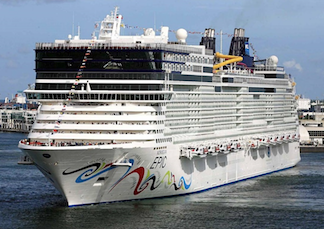The following is a marine accident brief from the National Transportation Safety Board (NTSB):
(WASHINGTON) — On Feb. 12, 2019, about 1724 local time, the cruise ship Norwegian Epic was docking at San Juan Cruise Port, Pier 3 east, in San Juan, Puerto Rico, when the vessel’s port bow contacted two of the pier’s mooring dolphins. None of the 6,023 people on board were injured, and there was no reported pollution. Damage to the mooring dolphins and connecting catwalks was estimated at $3.5 million, and damage to the vessel was estimated at $200,000.
Probable cause
The National Transportation Safety Board determines that the probable cause of the contact of the cruise ship Norwegian Epic with San Juan Cruise Port Pier 3 was a lack of communication and coordination between the master and pilot, which resulted in a poorly executed docking maneuver.
Report excerpt
According to both the master and pilot, they discussed the docking maneuver during their initial master/pilot exchange. The pilot told the master on numerous occasions that they needed to head toward Pier 4, which was east of Pier 3. As was customary with all cruise ships in the San Juan port, the master docked the vessel, and the master and pilot stated that they would use two tugs for docking. Although the master and the pilot discussed the use of tugs, they did not discuss how the tugs would be controlled or who would control them. The master was only heard giving one verbal order regarding the tugs (just prior to the vessel’s contact). According to the parametric data from the VDR, there was a point in the maneuver when both the tugboats and the thrusters were in opposition to each other’s actions, demonstrating the lack of coordination between the master and the pilot, beginning with the master/pilot exchange and continuing throughout the docking evolution.
Many of the pilot’s orders to the tugs and the tug captains’ replies were in Spanish. The pilot should have related his commands to the captain in English. The master also used gestures instead of verbal orders. Perhaps this could have worked if the master and pilot had agreed upon this method, but this was the first time they had worked together, and they had not previously agreed to this method of communicating tug orders.
Click here to read the complete report.

